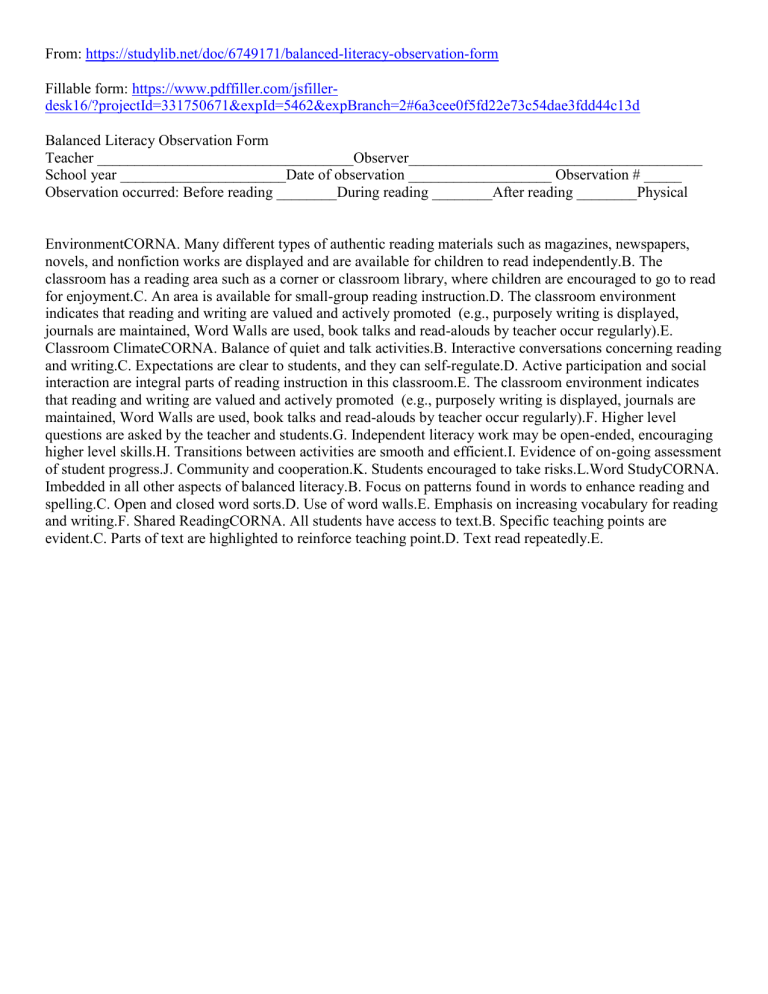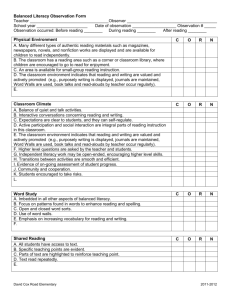Balanced Literacy Observation Form
advertisement

From: https://studylib.net/doc/6749171/balanced-literacy-observation-form Fillable form: https://www.pdffiller.com/jsfillerdesk16/?projectId=331750671&expId=5462&expBranch=2#6a3cee0f5fd22e73c54dae3fdd44c13d Balanced Literacy Observation Form Teacher __________________________________Observer_______________________________________ School year ______________________Date of observation ___________________ Observation # _____ Observation occurred: Before reading ________During reading ________After reading ________Physical EnvironmentCORNA. Many different types of authentic reading materials such as magazines, newspapers, novels, and nonfiction works are displayed and are available for children to read independently.B. The classroom has a reading area such as a corner or classroom library, where children are encouraged to go to read for enjoyment.C. An area is available for small-group reading instruction.D. The classroom environment indicates that reading and writing are valued and actively promoted (e.g., purposely writing is displayed, journals are maintained, Word Walls are used, book talks and read-alouds by teacher occur regularly).E. Classroom ClimateCORNA. Balance of quiet and talk activities.B. Interactive conversations concerning reading and writing.C. Expectations are clear to students, and they can self-regulate.D. Active participation and social interaction are integral parts of reading instruction in this classroom.E. The classroom environment indicates that reading and writing are valued and actively promoted (e.g., purposely writing is displayed, journals are maintained, Word Walls are used, book talks and read-alouds by teacher occur regularly).F. Higher level questions are asked by the teacher and students.G. Independent literacy work may be open-ended, encouraging higher level skills.H. Transitions between activities are smooth and efficient.I. Evidence of on-going assessment of student progress.J. Community and cooperation.K. Students encouraged to take risks.L.Word StudyCORNA. Imbedded in all other aspects of balanced literacy.B. Focus on patterns found in words to enhance reading and spelling.C. Open and closed word sorts.D. Use of word walls.E. Emphasis on increasing vocabulary for reading and writing.F. Shared ReadingCORNA. All students have access to text.B. Specific teaching points are evident.C. Parts of text are highlighted to reinforce teaching point.D. Text read repeatedly.E.
